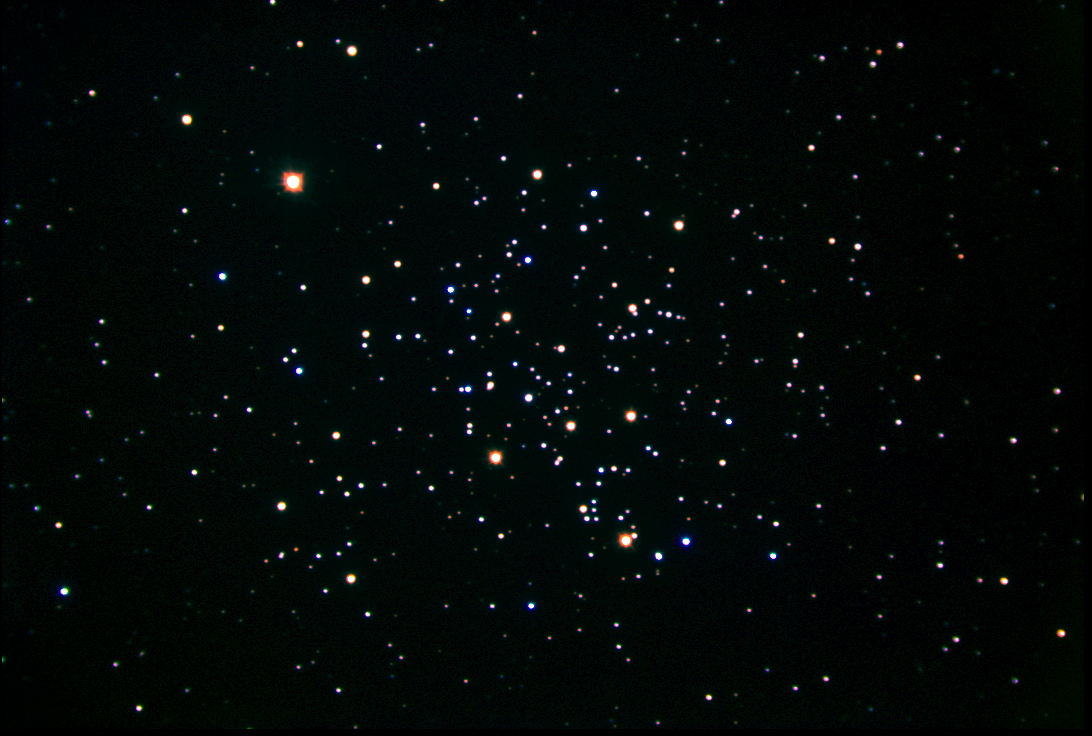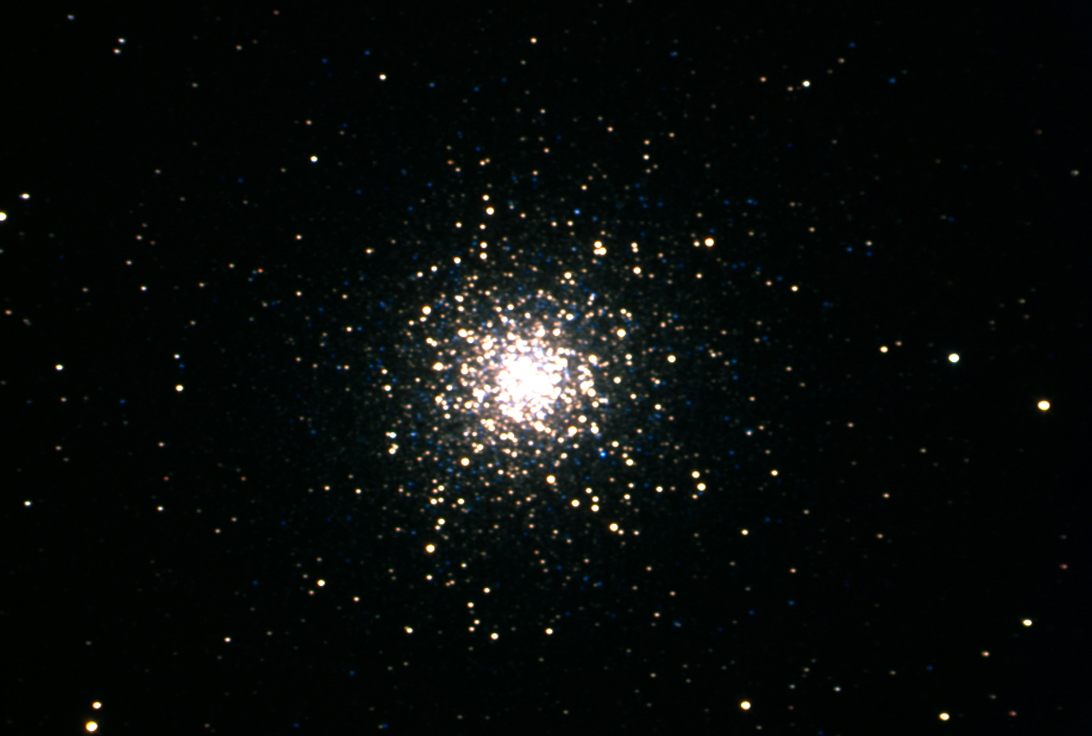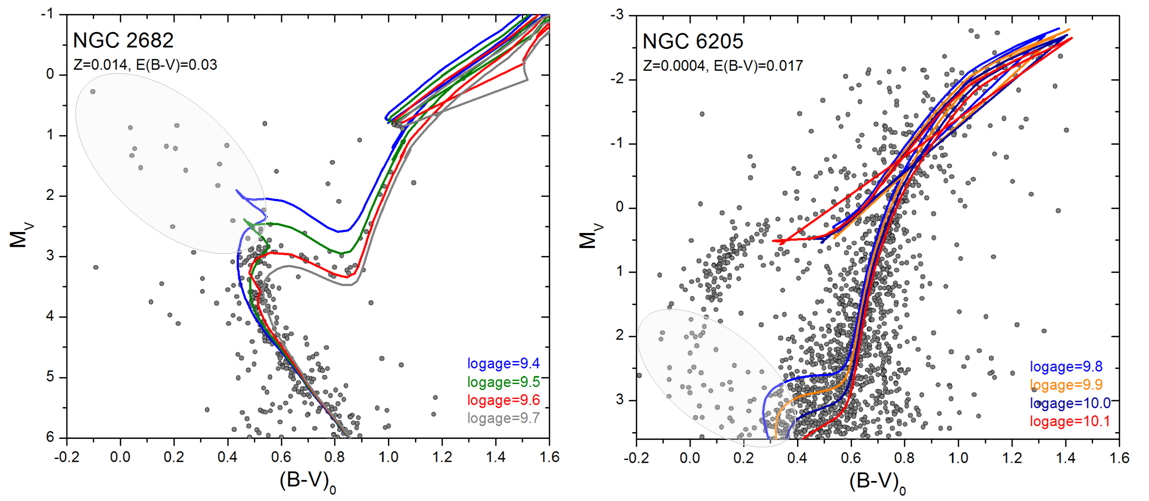Research on stellar clusters
The University of Athens Observatory has performed succesfully multi-wavelength photometric and astrometric observations on open and globular clusters in our Galaxy. This research aims towards the study of the stellar population characteristics and focuses on age and distance determination of both types of clusters, in order to disentangle the possible disagreement between literature values. It can also constrain the region where Blue Stragglers (BS) and Horizontal Branch (HB) stars appear in them and determine their photometric characteristics.
Multi-band photometric observations are obtained with the 0.40 m f/8 Cassegrain reflector at the University of Athens Observatory and an SBIG ST10-XME CCD camera, equipped with a set of BVRI (Bessell) filters and an f/6.3 focal reducer, giving a FoV of 17×26 arcminutes. Exposure time exceeds 10 ksec for each target. The most recent PARSEC isochron models were used for determining the age of both clusters, which utilize Padova and Trieste Stellar Evolution Code, with the most recent updates (Bresan et al. 2012). The plots below show the calculated CMDs for both clusters.
NGC 2682 shows clearly MS stars, as well the turnoff point, Red Giant Branch (RGB) and Red Clump (RC). HB stars were used in NGC 6205 for the absolute magnitude determination, while RC stars were used for estimating the distance of NGC 2682, according to Bilir et al. (2013). Distance and age are derived for a sample of galactic clusters and they are in agreement with the most resent literature values, despite the fact that we used a relatively small telescope.
Age estimation was based on the most accurate evolutionary tracks and better observational data, resulting in highly reliable values on NGC 2682. The age of NGC 6205 is high and confirms the cosmological significance of GCs as indicators of the age of our Universe. The number of BS found in this study indicates rich population in both clusters. Their photometric characteristics show strong dependence on metallicity and age. Additionally, the significantly blue HB stars in NGC 6205 may indicate the existence of more than one chemically distinct stellar populations (Paltrinieri et al. 1998 and references therein).
Future studies include the stellar distribution and density in the clusters as a function of metallicity, the study of carbon stars and blue stragglers populations, as well as stellar variability on selected cluster members.
Research on stellar clusters from the University of Athens Observatory has been announced in international conferences, as referred publications.


